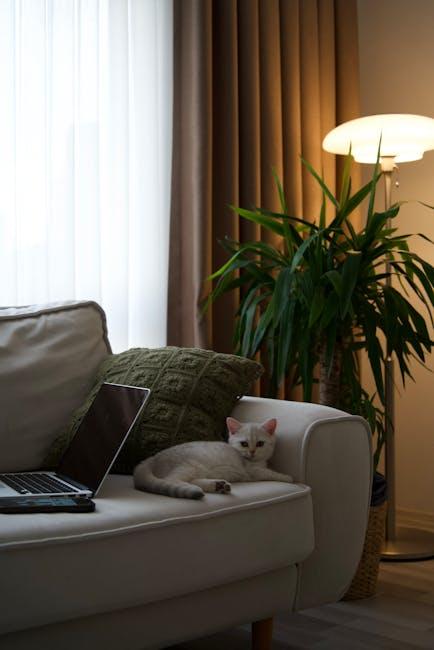In the modern landscape of work, where technology seamlessly integrates with our daily routines, a new kind of occupational hazard has emerged: the stretching/flex-your-age-effective-stretching-for-seniors/” title=”Flex Your Age: Effective Stretching for Seniors”>sedentary lifestyle of the desk worker. While digital advancements have catapulted productivity to unprecedented heights, they have also tethered us to our chairs, with fingers perpetually dancing over keyboards and eyes fixed on glowing screens. Amidst this digital ballet, one simple, often overlooked practice stands as a guardian of our well-being: stretching. This age-old activity, rooted in ancient traditions yet ever relevant, holds the key to unlocking a world of physical relief and mental clarity. As we delve into the importance of stretching for desk workers, we uncover not only a pathway to alleviating the physical strains of modern work life but also a bridge to enhanced focus and renewed vitality. Join us on this exploration of how a few moments of mindful movement can transform the daily grind into a harmonious symphony of health and productivity.
Enhancing Flexibility and Reducing Tension for Desk Workers
For those tethered to their desks, integrating simple stretches into the daily routine can be transformative. By enhancing flexibility, you not only alleviate physical tension but also invigorate the mind. Consider these straightforward practices:
- Neck Stretch: Gently tilt your head towards each shoulder, holding for a few breaths to release built-up stress.
- Shoulder Rolls: Rotate your shoulders forward and backward to ease tightness and improve posture.
- Seated Torso Twist: While sitting, twist your torso to each side, using your chair for support, to promote spinal mobility.
- Wrist and Finger Stretches: Extend your arm and gently pull back on your fingers to relieve the strain from typing.
Regularly practicing these stretches can prevent discomfort and promote a sense of well-being, turning a mundane desk job into an opportunity for physical renewal. By weaving these exercises into your day, you embrace a proactive approach to health that benefits both body and mind.

Understanding the Science Behind Stretching and Its Benefits
In the hustle and bustle of modern work life, especially for those tethered to their desks, the subtle art of stretching often goes unnoticed. However, delving into the science of stretching reveals its profound impact on the human body. At its core, stretching increases blood flow to muscles, enhancing flexibility and range of motion. This not only helps in maintaining proper posture but also in alleviating the tension that builds up from prolonged sitting. Studies suggest that regular stretching can significantly reduce the risk of musculoskeletal disorders, a common ailment among desk-bound professionals.
Moreover, stretching is not just about physical benefits. It offers a mental reprieve, allowing for a momentary pause that can rejuvenate the mind. Here are some of the key benefits that stretching provides for desk workers:
- Improved Posture: Regular stretching exercises can help counteract the effects of slouching and promote a natural alignment of the spine.
- Enhanced Circulation: By increasing blood flow, stretching aids in delivering essential nutrients to muscles and tissues.
- Stress Relief: Stretching encourages the release of endorphins, the body’s natural mood enhancers, leading to reduced stress and anxiety levels.
- Injury Prevention: Flexible muscles are less prone to injuries, making stretching a crucial part of a preventive health strategy.

Practical Stretching Routines Tailored for Office Settings
Incorporating simple and effective stretches into your daily routine can significantly alleviate the tension accumulated from long hours at a desk. Here are some practical stretching routines that seamlessly fit into an office setting, ensuring that your productivity and well-being go hand in hand:
- Seated Torso Twist: While sitting upright, place your right hand on the back of your chair and your left hand on your right knee. Gently twist your torso to the right, holding for a few seconds. Repeat on the opposite side. This stretch helps to relieve tension in the spine and improve flexibility.
- Neck Stretches: Slowly tilt your head towards your shoulder, feeling the stretch along the opposite side of your neck. Hold for a few seconds and switch sides. These stretches are excellent for reducing neck strain caused by prolonged screen time.
- Wrist and Finger Stretch: Extend your arm in front of you, palm up. Use your other hand to gently pull back on your fingers, stretching your wrist and forearm. This is particularly beneficial for those who spend a lot of time typing.
- Chair Hamstring Stretch: Sit on the edge of your chair, extend one leg out straight with your heel on the floor, and lean forward slightly. This stretch targets the hamstrings, which can become tight from extended sitting.
These routines are designed to be quick and easy, requiring minimal space and time, yet offering maximum relief. By integrating these stretches into your workday, you can combat stiffness and enhance your overall comfort, leading to a more productive and enjoyable work experience.

Creating a Stretch-Friendly Workspace for Optimal Health
Incorporating stretches into your daily routine at work doesn’t just alleviate physical discomfort, it can enhance your overall well-being. For desk workers, a stretch-friendly workspace is not a luxury but a necessity. Ergonomic adjustments paired with stretching routines can transform your workspace into a haven of productivity and health. Consider these elements to cultivate a space conducive to stretching:
- Adjustable Furniture: Invest in a chair and desk that allow for height adjustments to maintain optimal posture.
- Open Space: Ensure there is ample room around your desk for movement, allowing you to perform stretches without obstruction.
- Stretching Tools: Keep items like a foam roller or resistance bands within reach to facilitate quick stretch breaks.
- Visual Reminders: Place a small chart or digital reminder for different stretches to encourage regular movement.
By integrating these elements, you empower yourself to take short breaks that can significantly improve both mental focus and physical health, ultimately leading to a more balanced workday.
Key Takeaways
As we draw the curtains on this exploration of the significance of stretching for desk workers, let us not forget that our bodies are not designed for prolonged stillness, but rather for movement and vitality. In the midst of deadlines and digital demands, the simple act of stretching can be a beacon of wellness, gently reminding us to honor our physical selves. Whether it’s a quick shoulder roll between emails or a full routine to bookend your workday, these moments of movement are investments in your health and productivity. So, as you return to your daily grind, carry with you the knowledge that every stretch is a step towards a healthier, more balanced life. Your body will thank you for it, one stretch at a time.
